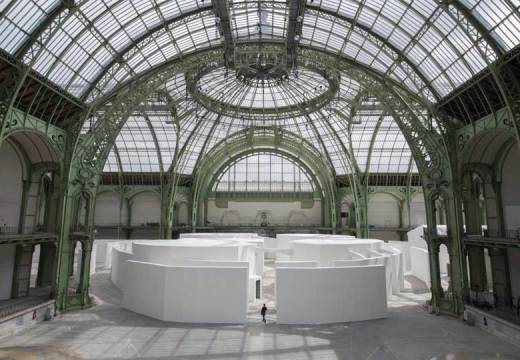A round-up of the week’s reviews…

Dune Sketch in Orange, Pink and Blue (1909), Piet Mondrian © 2014 Mondrian/Holtzman Trust c/o HCR International USA
‘Mondrian and Colour’ at Turner Contemporary (Imelda Barnard)
Born from a muddy palette, the artist’s early provincial landscapes are a far cry from the gridded urban vibrancy of Broadway Boogie Woogie. Staged to commemorate the 70th anniversary of Mondrian’s death, the exhibition, which is a companion piece to Tate Liverpool’s ‘Mondrian and his Studios’, traces the artist’s arrival in the 1920s at a primary coloured purism. The path to abstraction was a colourful one.
‘Phyllida Barlow: Fifty Years of Drawings’ at Hauser & Wirth (Digby Warde-Aldam)
As others have noted, many of the drawings share the architectural qualities of her sculptures. But Barlow clearly relishes the freedom that working on paper affords her. Unconstrained by the limiting physical properties of sculpture, she lets rip with formally precise but structurally improbable shapes and scenarios.

Installation view: Richard Long at Lisson Gallery, London (23 May–12 July) Courtesy the artist and Lisson Gallery
Richard Long at Lisson Gallery (Scott Morris)
Richard Long continues to tread his own well-worn path. In his new exhibition at London’s Lisson Gallery, his walks across southern England, Switzerland’s Engadine valley and the glaciers of Antarctica are represented in the forms that will be familiar to anyone who has followed his 50-year career: the stone sculpture, the mud-daubed canvases, the photographs of subtly altered landscapes, the wall-length text works. That’s not meant to sound negative; these works may be familiar, but for the large part these are fresh and affecting depictions of an artist navigating the natural world.
Baccio Bandinelli at the Bargello (David Ekserdjian)
If Baccio Bandinelli is arguably the least loved major artist of the entire Renaissance, it is not exclusively the fault of his sworn enemy Vasari. All too often, it is also his actual works that seem to induce at least some of us to walk by on the other side. Now, at last, a peerless exhibition in the perfect setting of the Bargello is the ideal opportunity to reconsider his achievement.

Tate’s ‘Matisse Live’ (Imelda Barnard)
I had some reservations before the screening. In what way would this be a ‘live’ event? How would the stillness of art translate into moving pictures? And who was the whole event aimed at?
To a degree, these concerns were borne out. The liveness of the event didn’t quite work…There was some of the nervousness that comes with anything live – the potential for it all to go wrong – but the whole thing felt choreographed, polished.
Unlimited access from just $16 every 3 months
Subscribe to get unlimited and exclusive access to the top art stories, interviews and exhibition reviews.
















![Masterpiece [Re]discovery 2022. Photo: Ben Fisher Photography, courtesy of Masterpiece London](http://zephr.apollo-magazine.com/wp-content/uploads/2022/07/MPL2022_4263.jpg)
The threat to Sudan’s cultural heritage